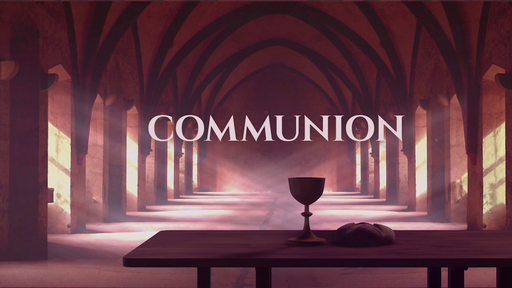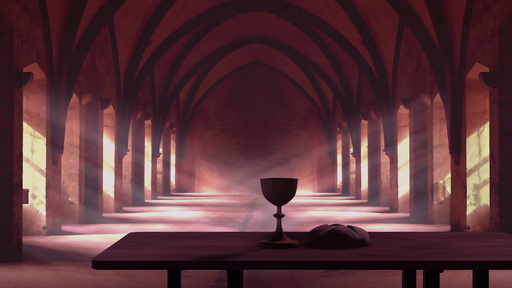Dwelling Among Us: Reflecting on the Tabernacle's Completion
Torah Portions • Sermon • Submitted • Presented
0 ratings
· 4 viewsNotes
Transcript
Bible Passage: Exodus 38:21-40:38
Bible Passage: Exodus 38:21-40:38
Summary: This passage details the meticulous preparation, construction, and eventual worship surrounding the Tabernacle, demonstrating God's desire to be among His people. The completion of the Tabernacle serves as a crucial moment in Israel's history, where tangible work, done faithfully, transformed into a divine habitation, representing the relationship between God and His people and the significance of obedience and community effort in the life of faith.
Teaching: The teaching emphasizes that constructing a space for worship entails collective effort and dedication as well as inviting God into the heart of our community. Each act of service, much like the skilled craftsmanship of the Tabernacle, plays a role in establishing a sacred environment where God can dwell among us.
Big Idea: The act of building community with God at its center is essential for His presence to be tangible in our lives and surroundings, reflecting how our collective faith and service are vital in establishing His kingdom today.
1. Detailed Dedication
1. Detailed Dedication
Exodus 38:21-31
2. Crafted Commitment
2. Crafted Commitment
Exodus 39:1-31
3. Unified Fulfillment
3. Unified Fulfillment
Exodus 39:32-43
4. Guided Obedience
4. Guided Obedience
Exodus 40:1-16
5. Glorious Presence
5. Glorious Presence
Exodus 40:17-38
This, the final Law portion of Exodus, recorded the careful accounting of the materials used in constructing the Tabernacle. Moses instructed that the silver, gold, and bronze collected for the sacred work be weighed and recorded, ensuring transparency and faithfulness in the project. Ithamar, the son of Aaron, oversaw this inventory, demonstrating the importance of stewardship in God’s work.
Bezalel and Oholiab, the master craftsmen chosen by God, completed their tasks precisely according to the divine instructions given to Moses. They did not deviate from the plan, ensuring that every detail aligned with God’s command. Their faithful work reflected their obedience and partnership with God in bringing His dwelling place to completion.
This careful work and accountability highlighted a broader spiritual truth reflected in Midrash Tanchuma:
“As long as My children were occupied with the Mishkan (Tabernacle), they did not grumble against Me. Now they will again begin to provoke Me.”
This excerpt revealed that while Israel was engaged in the holy work of constructing the Tabernacle, their hearts remained focused on God, preventing rebellion and complaints. The act of co-creating with God gave them purpose and unity. However, once the work was completed, the risk of distraction and spiritual decline returned. This underscored the idea that when God’s people were engaged in His work, they aligned with His will, but when they lost that focus, they were more prone to stray. Which will prove prophetic. It is the human condition.
Herein is also detailed the making of the priestly garments, emphasizing their significance by repeatedly mentioning them throughout the Exodus. The continual reference to the clothing underscored its great importance, as it was not only for the priests’ service, but without the garments there could be no service conducted. Later, when Rome ruled over Judea they held the priestly garments as a method of controlling the Jewish people. The clothing was a reflection of divine glory. These garments set the priests apart, marking them as mediators between God and Israel and visually representing a return to Eden, where heavenly beings and humanity once dwelled together.
The garments were crafted from gold, blue, purple, and scarlet thread woven into fine linen. The gold was hammered into thin sheets and cut into threads, woven directly into the fabric, causing the garments to shimmer with light, resembling the radiance of heavenly beings. This reinforced the idea that the priests, especially the high priest, bore a likeness to the divine, much like the cherubim who dwelled in God’s presence.
The ephod and breastplate were among the most significant pieces. The breastplate was adorned with twelve gemstones, each engraved with the name of one of the twelve tribes of Israel. This not only symbolized the high priest’s role as a representative of the people, carrying them and their position before God with the High priest himself, as a mediator, before God but also reflected the brilliance of the heavens, much like the firmament. The gold plate on the high priest’s forehead, inscribed with “Holy to the Lord,” further signified his consecration and direct connection to God’s presence.
The repeated mention of the priestly garments highlighted their sacred role in the Tabernacle, which itself was a recreation of Eden. Just as Adam and Eve once walked with God alongside the cherubim, the Tabernacle restored a space where heaven and earth met. The priests, clothed in garments that radiated light by reflecting the various fires that burned in the tabernacle. This served as living symbols of this restored communion, bridging the gap between God and His people. The God of Israel create an environment where He could be with them and they could appear like Him.
Here described is the completion of the Tabernacle’s construction. The sons of Israel faithfully carried out all that God had commanded, ensuring that every element was crafted according to the divine instructions given to Moses. Though the Tabernacle had not yet been erected, all its parts and pieces—the curtains, frames, furnishings, priestly garments, and sacred objects—were completed precisely as God had revealed to Moses.
Once the work was finished, the people brought everything to Moses, their mediator, who inspected the craftsmanship and confirmed that they had followed God’s commands exactly. Their obedience reflected their faithfulness and willingness to partner with God in establishing His dwelling among them. Moses then blessed the people, affirming that their efforts had been accepted by God.
This passage underscored the careful obedience of the Israelites and the significance of Moses’ role as the one who received God’s instructions and ensured they were carried out. The Tabernacle, though not yet assembled, was fully prepared, awaiting God’s next command for its construction, marking a crucial step in the restoration of God’s presence among His people.
This set of instructions described how God commanded Moses to set up the Tabernacle on the first day of the first month, marking the beginning of a new phase in Israel’s journey. Moses, acting as God’s chosen representative, was instructed to carefully assemble the individual parts and pieces of the Tabernacle, ensuring that everything was arranged according to God’s precise design. This emphasized Moses’ role as the mediator between God and the people, faithfully carrying out divine commands to establish God’s dwelling among them.
God’s instructions detailed the placement of each sacred object: the Ark of the Testimony was to be placed inside the Holy of Holies and shielded with the veil, the table and lampstand were to be arranged in the Holy Place, and the altar of incense and the bronze altar were to be positioned in their proper locations. Each element was crucial for the function and holiness of the Tabernacle, symbolizing God’s ordered presence among His people.
Additionally, Moses was commanded to consecrate the Tabernacle and all its furnishings by anointing them with holy oil, setting them apart for sacred use. He was also to anoint Aaron and his sons, clothing them in their priestly garments and ordaining them for their service. This act established the priesthood, signifying that they were chosen and sanctified to mediate between God and Israel.
Through this passage, Moses was shown as the faithful servant of God, receiving divine instructions and ensuring their fulfillment. His role mirrored God’s authority as he set everything in place, preparing the Tabernacle to become the sacred space where God’s presence would dwell among His people.
Finally recorded was the faithful completion of the Tabernacle, exactly as God had commanded Moses. On the first day of the first month, Moses set up the Tabernacle, carefully arranging each part according to the Lord’s instructions. He placed the Ark of the Testimony, set up the veil, arranged the table, the lampstand, the incense altar, and the burnt offering altar, and established the courtyard. After assembling the Tabernacle, Moses anointed and consecrated it, along with Aaron and his sons, marking the transition to the priestly system of mediation through sacrifices.
Once everything was completed, the glory of the Lord descended in a cloud and filled the Tabernacle. Unlike his previous encounters with God on Mount Sinai, Moses could not enter the Tabernacle when the divine presence settled upon it. Jewish sages offer several explanations for this. Some suggest that the intensity of God’s glory was too overwhelming, preventing even Moses from stepping inside. Others, such as Midrash Tanchuma, propose that Moses was initially unable to enter out of humility, waiting for God’s invitation. This moment signified a shift in mediation—from Moses’ direct encounters with God to the newly established priesthood, where Aaron and his sons would now enter into God’s presence on behalf of the people through the sacrificial system.
The final verses of Exodus emphasized that the cloud of God’s presence remained with Israel, guiding them throughout their journey. When the cloud lifted, they set out, and when it remained, they stayed. This visible sign of God’s dwelling among His people reinforced that the Tabernacle was a continuation of Eden, where humanity and the divine could once again meet. Though Moses had faithfully mediated the covenant, the priesthood was now established as the means by which Israel would interact with God’s holiness, foreshadowing the ongoing system of worship and atonement.
ADVERTISEMENT
Related Media
See moreRelated Sermons
See more

Roger Ferguson • 4 views


Robert Joseph Murray • 5 views


Roger Ferguson • 10 views



